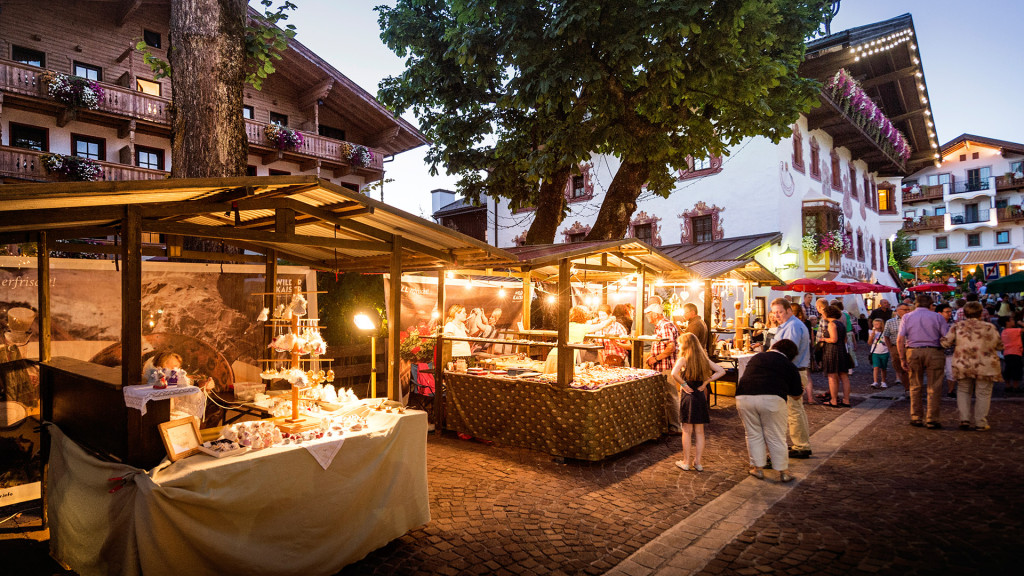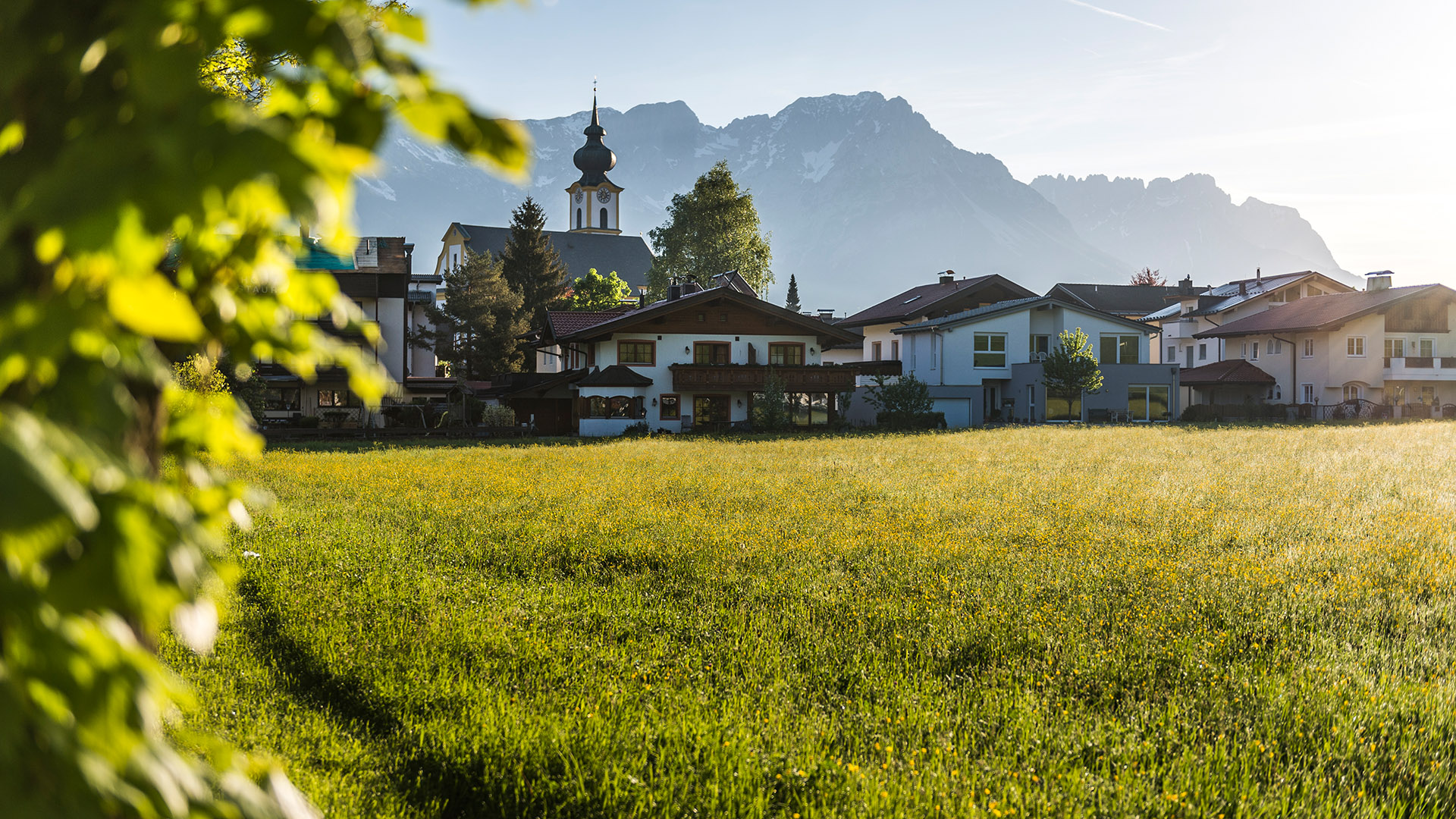
Our village is located in a sunny, wind protected valley between the Wilder Kaiser mountains and the Hohe Salve, only a few kilometers away from the border Kufstein-Kiefersfelden.
Söll – a real jewel
Every restaurant you visit will give you the feeling: this is where I belong. Two modern cable cars bring you up and down the mountain, the Hohe Salve – with a view on about 70 mountains 3000m above sea level. You will easily reach the cities Innsbruck und Kitzbühel, which should be a pleasure to visit during your stay at the Hotel Tyrol.
Do a pilgrimage in Söll…
…on the trail of the Jakobsweg!
The Austrian main way reaches the tyrolean border from Lofer over the Pass Strub. With Waidring and Erpfendorf you will get to St. Johann in Tirol. From there, the “Jakobsweg” leads around Going, Ellmau and Söll to Wörgl and Angerberg. Here, the Jakobsweg from Bavaria joins the main trail. You will reach Kufstein while it also leads to the Pilgrimage church Maria Hilf in Kleinholz.
With Langkampfen and Niederbreitenbach you will reach Mariastein with its unique castle church. From now on, the Jakobsweg stays in the area of the Inn-valley. Some of the highlights are the old city Rattenberg, the Jakob church in Strass in the Zillertal, the Georgenberg and the monastery Fiecht. The way leads from Terfens to the Gnadenwalder Plateau in Absam and finally to Innsbruck. There we will find the statue of Sint. Jakobus and the Dome to Sint. Jakob located in the city centre.
Leaving Innsbruck behind, the route leads to Pfaffenhofen, to the most famous monastery in northern Tyrol, monastery Stams. The following places are Haiming and Karres, the train station in Imst and the church Kronburg. In Zams you will leave the Inn valley and reach Flirsch, St. Jakob, St. Anton at the Arlberg and the Hospiz St. Christoph (highest point of the Jabobsweg to Santiago de Compostela at the Maienlake: 1.865 m above sea level). The south- austrian route leads over the Brenner, Steinach and Matrei back to Innsbruck.

Söll and its history
The colonization of the valley began around 600 A.D. Witnesses of this time are numerous old farmhouses, which names end on “-ing”.
Söll was documentary mentioned late. It happened in 1217 at the establishment of the church in Chiemsee. At this time its name was “sel”, 1480 they changed it to “seel” and since 1615 it has its name “Söll”. The origin is still not clarified. It could derive from the german word “selida” (place, house, appartement).
Tyrolean countess Margarete Maultasch got the districts Kufstein, Kitzbühel and Rattenberg as a present for her Wedding in 1342. Some people suppose that she has been in Söll for her hunting tours.
1504, Söll finally became to be a part of Tyrol. Söll was spared from the war. The small battle, the “Tyrolean Freiheitskriege” in 1809, was the only battle Söll ever had to fight. A board at the Schnaplwald still reminds us of what happened then. Söll became a part of Bavaria till the congress in Vienna, 1814.
At this time, Napoleon started his maneuver against Russia. Johann Koller, farmer zu Kornegg, was one of the few persons that survived the russian winter 1812/13. He died at 100 years and is known as the oldest inhabitant from Söll till now.
In the 50s, Söll started to become a trousim area. 250 guests spent their summer here in 1953. 1959 the Lift AG was founded and with it the first cable car was built at the Hohe Salve. Tthe offer of tourism facilities got bigger and bigger with the establishment of the tourism association.
Today, Söll counts itself to the biggest tourism regions in Tryol. It is proud of its hospitality and its incomparable offer for its guests – summer and winter.

